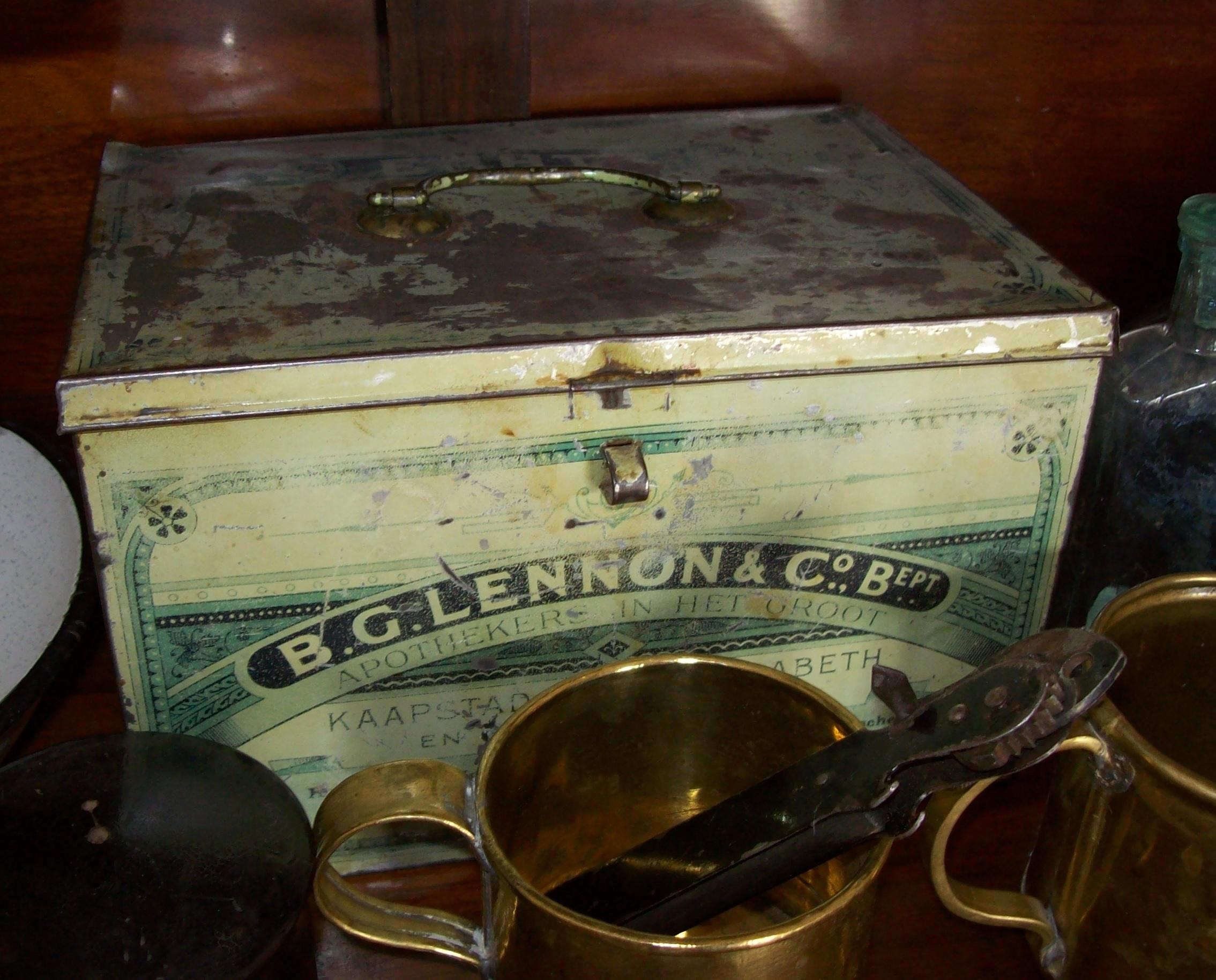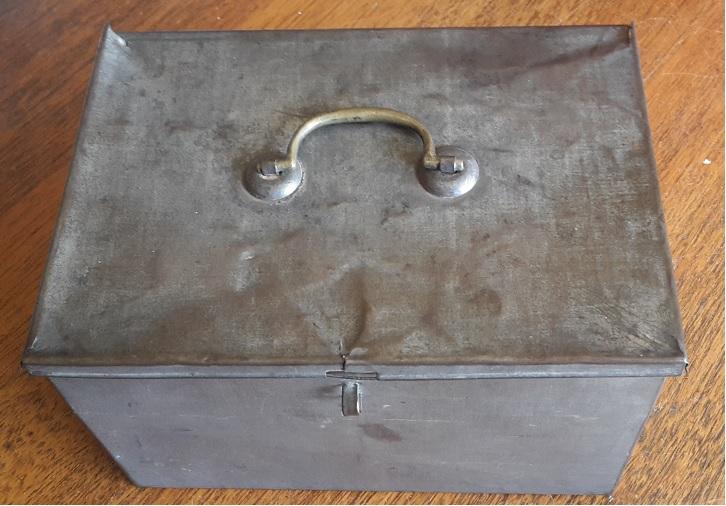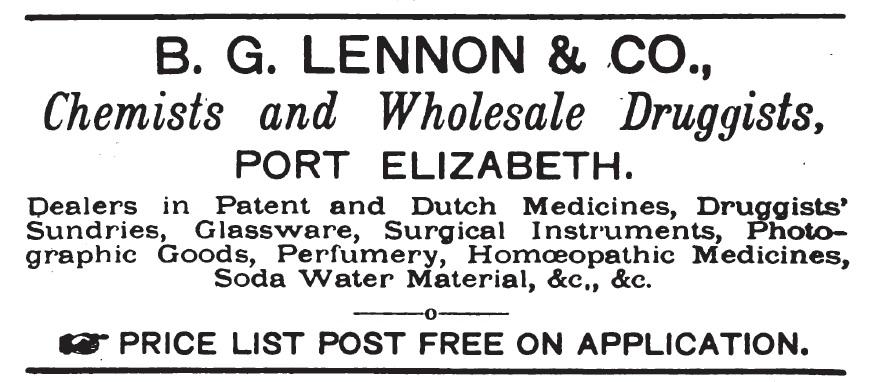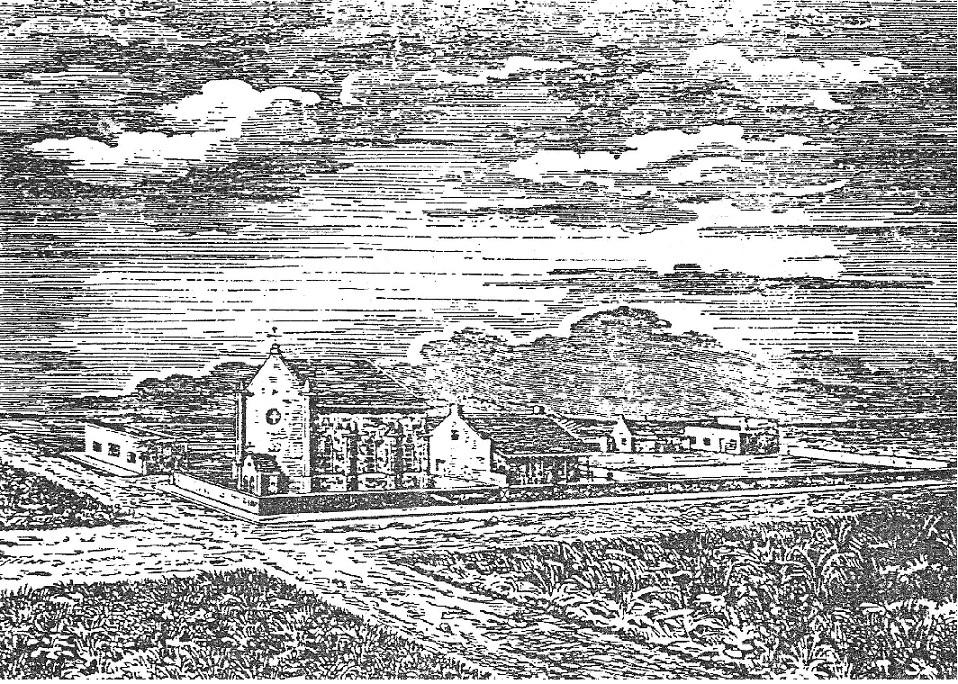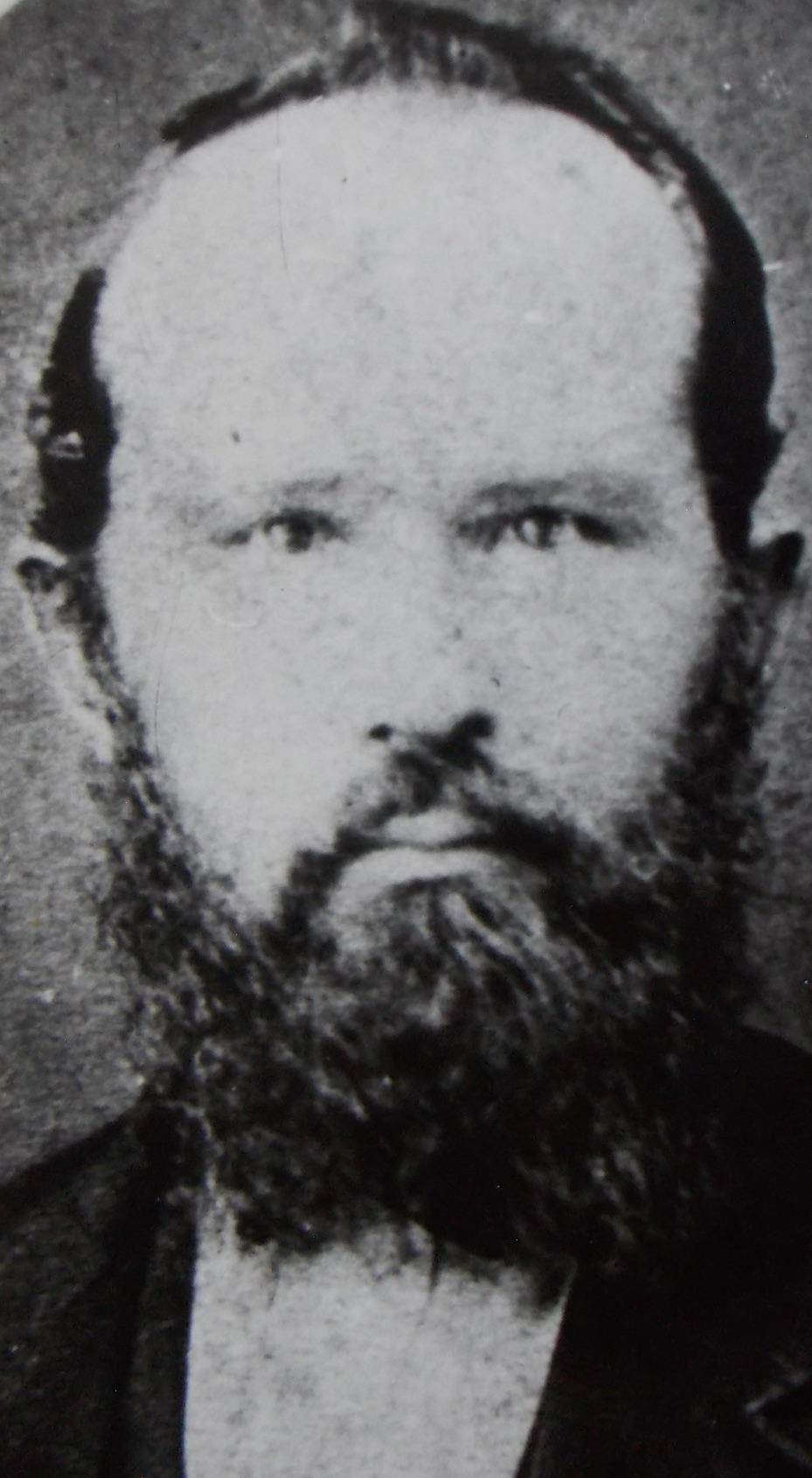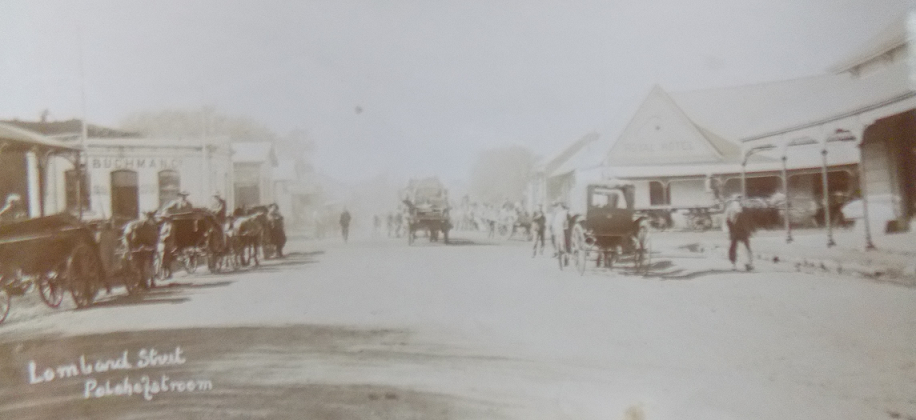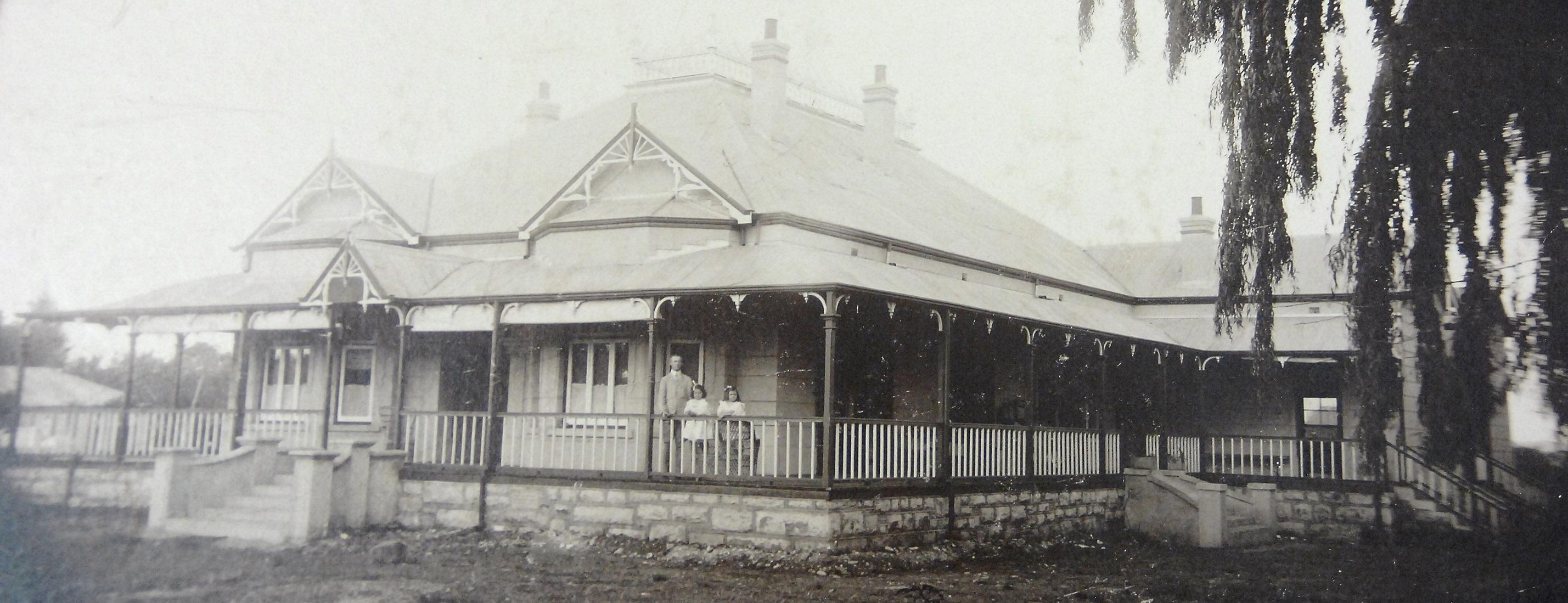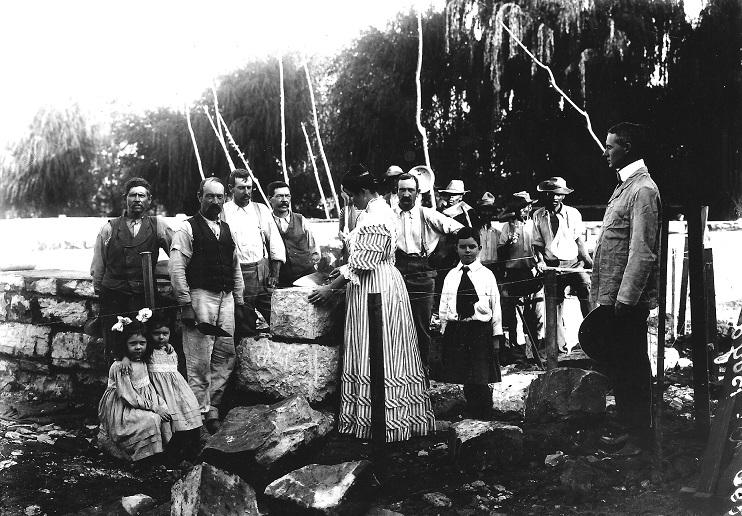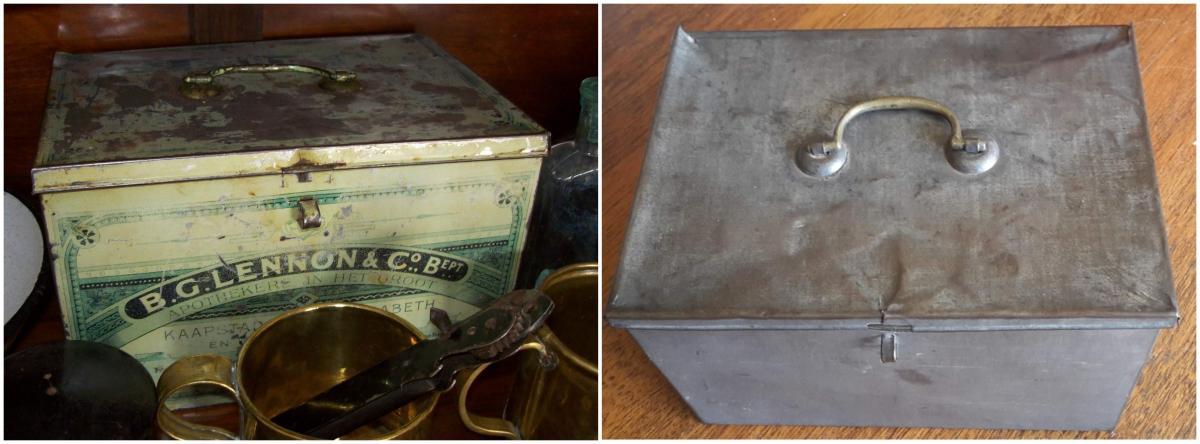
Disclaimer: Any views expressed by individuals and organisations are their own and do not in any way represent the views of The Heritage Portal. If you find any mistakes or historical inaccuracies, please contact the editor.
With the passing of the Dr Alfons Raats at the end of 2021, Potchefstroom lost one of its well-loved physicians. Since the founding of the town many medical men – and women – served Potchefstroom with great distinction. Researching this article about the early doctors of our city brought to light a surprising number of tragic stories.
In Potchefstroom 150 Prof Willie Prinsloo wrote that the first inhabitants of Potchefstroom – as all other Voortrekkers – took care of health matters by themselves. Ernest Jenkins wrote in Potchefstroom 1838- 1938 that it was the wives (whom he calls “Tanta” in general) of these pioneers who took care of medical matters:
Then ‘Tanta’ looked around for that dearest of all possessions – the ‘Huis Apoteek,’ the family medicine chest. What would home be without it in a country that was doctorless? ‘Tanta’ frequently gloried in a well-earned reputation for being able to cure all ailments under the sun, with the aid of her panacea the Huis Apoteek. What miracles she wrought with ‘Ruiters salf,’ ‘Rooi Lavendal,’ and ‘Swart Pillen’ and what consolation she brought about with ‘Besoard poeder’ and ‘Poeder tegen die scherfe’ as well as ‘Harlemmer Olie'.
This Lennon tin was the ‘Huis Apoteek’ and contained the medicaments which were the only defence the pioneers of the 19th century had against illnesses and diseases. This tin is in the collection of the Potchefstroom Museum. Not surprisingly Lennon’s medicines are still on the market today and sell well in Potchefstroom, according to a Potchefstroom pharmacist. (Lennie Gouws)
The important role the Lennon “Huis Apoteek” played in the households of our forebears, is personified by this tin. It is exactly the same as the one above, but was used so much that all the paint wore off. It was the Lennon tin of my grandmother, Lenie Lombaard of Olifantshoek. Legend in the family has it that she never travelled without this tin and its contents. When you hold up the bottom of the tin to light, small pinpricks of light shine through indicating how thin the bottom is from wear and tear. The sad truth is that these inadequate medicines did not always save lives. My grandparents lost two children in infancy. (Lennie Gouws)
The Lennon advertisement in the Transvaal Book Almanac of 1877
According to Prof Prinsloo it goes without saying that the community was reliant on any individual who made any claim that they had elementary medical knowledge.
In 1840 the German missionary, Pastor Bruno Köhler, arrived in Potchefstroom and delivered medical and dental service to the community for almost 11 years.
Pastor Bruno Köhler served at the Berlin Missionary Station. This linocut is from a book about the work of the Berlin Missionary Society in eastern and southern Africa, which was published in 1893. It shows the Potchefstroom complex on the corner of Gouws Street (Sol Plaatjie) and Du Plooy Street, which is the oldest missionary church north of the Vaal River. The building was completed in 1877, built mostly by the first two pastors who served the community, Wilhelm Moschütz and his successor, Bruno Köhler. Köhler arrived in Potchefstroom on 5 October 1874, the day his predecessor, Moschütz passed away.
Prinsloo continued:
In the Staats Courant of 19 March 1858 Herman Jeppe of Rustenburg offered his medical service to the residents of Potchefstroom. His claim to this knowledge was the fact that he once worked as a clerk in the pharmacy of his father-in-law in Kroonstad. He also became postmaster general, attorney general and owner of a newspaper in various times in Potchefstroom.
One of the first
One of the first doctors of the town was Dr Bernardus Poortman, whose life and work were discussed in my article on street names beginning with a “P” (click here to view). Geoffrey Jenkins noted in A Century of History that he advertised (as was the custom at the time) in the Transvaal Argus of 26 May 1866 offering his services as “Chirwign” (surgeon) and “Accoucheur” (a person who assists with births). Most people who lived in Potchefstroom during the latter half of the nineteenth century were acquainted with a famous prescription of Dr Poortman’s “Poortman’s Pills”.
Another doctor from the early years of Potchefstroom was Dr Otto, after whom a street was also named and hence discussed in my article on those street names (click here to view).
Doctor shot as traitor
During the First Anglo-Boer War the Boers shot Dr Christian Woite as a traitor, only two hours after passing sentence. Prinsloo wrote:
The German immigrant, Christian Woite, also offered medical services to the community. His career was, however, abruptly ended only after six years of services. On 6 January 1881, during the Siege of Potchefstroom, he was shot as a traitor by the Boer forces. He was charged with espionage.
Dr Woite Photo (Potchefstroom Museum)
GF Austen wrote in his unpublished diary about the demise of Dr Woite. It is quoted by Prinsloo:
Thursday January 6, 1881
The day was marked by an appalling tragedy. The trial, condemnation, and immediate execution of Christian Woite. Christian O Woite was a native of Spriemburg* – Prussia, of respectable parentage and fair middle class education. He had been living some years in (the) Cape Colony where he married and came to the Transvaal some six years since to settle, and at the time of his death he was the father of nine children the eldest whom was a youth of 19 years of age. Although not a regularly qualified medical practitioner he had great experience and knowledge of the treatment of diseases incident to South African life and possessed a widespread and well-earned reputation for his successful treatment of many difficult cases in this country, his name and character were well known and thoroughly appreciated in this district.
The proceedings of the Krygsraad on his trial were kept profoundly secret but enough has been gathered to lead to the conclusion that the accusation against him was that of being in the confidence of the Government and of having supplied information to its officials of the proceedings at the last meeting held by the Boers and the plans for rising and defying the Government which have since been attempted.
Woite’s son Wilhelm was also included in this charge – the course of the evidence is not at present known. But the Krygsraad pronounced him guilty of the charge, and to the astonishment and horror of all, condemned him to be shot, two hours only being allowed between sentence and execution.
The son Wilhelm was acquitted and discharged. On it becoming known that Woite was condemned, a memorial was hastily got up among his countrymen the German residents in this town; representing his nationality and praying for a commutation of the sentence. Through the short time to elapse, the difficulty of communication in the town and other causes, but few signatures were affixed. The Krygsraad refused to entertain the memorial. His wife and family were allowed access to him for a brief parting interview over the heart rending and agonizing nature of which a veil must be drawn...
At 2 o’clock pm the victim was conveyed handcuffed and under a strong guard to the vlei below the Royal Hotel, towards the river where a grave had been dug. A large number of the Boers, armed, with their Commandants, surrounded the site of the painful scene. The Rev B Köhler of the Berlin mission of this town, Woite’s countryman, next door neighbour and friend, offered a short but impressive prayer.
On the conclusion of this the firing party consisting of eight men – which had been previously stationed in readiness – received the fatal signal. Woite gave one convulsive bound upwards and fell with three bullets in the breast and one in the forehead.
Photo of Lombard Street with the Royal Hotel to the right as it looked at the time Woite was shot as a traitor. The view is in the direction of the Mooi River where Woite was initially buried. The execution might have taken place where the River Walk Centre is today. (Potchefstroom Museum)
According to an article that appeared in the New Zealand Tablet in November 1881, Woite was a homeopathic doctor “amongst the Dutch people who liked and respected him”. The article was written by a Rev CW Fossett of New Germany in Natal, where Woite resided before coming to the Transvaal.
He wrote:
(Woite)... was present at one of the Boer meetings, when they concerted their plans to attack the English Government. This Woite revealed by writing a letter to the officer of the camp at Potchefstroom. The Boers taking this town by surprise, the officers in their hurry left the letter, which unfortunately bore signature, in a hotel, where the Boers picked it up.
Woite was apprehended by the Boers.
Having been kept in prison for a few days he scratched on the 6th of January, in presentment of his approaching death, with a nail, the following words on the wall of his cell: “Jesus is my comfort; I have given over myself into his hands; I am glad to die; I shall live in Christ. A little while ye shall see me no more for I go to the Father. Christian Woite.”
Half-an hour afterwards the Boers led him out, shot him and threw his body in a mud-hole, from where his eldest son, a lad of 19 years, fetched it out, washed and put in a coffin and buried it. Peace being restored the boy took his dear father’s body up again and interred it in the cemetery.
Woite was 42 years old at the time of his death. The Boers also seized all his cattle, horses and traps, leaving to the widow and fatherless children, of whom the youngest is only three years, nothing but the house and erf on which it stands. His destitute widow, Anna, wrote to Rev Fossett requesting aid.
The inscription on his tombstone in the Alexandra Park Cemetery indicated that he was born on 3 November 1838. It concluded with: “He was cut down in the prime of his life.”
* Spriemburg, also spelled Spremberg, is east of Leipzig in Germany not far from the border with Poland.
Distraught doctor became USA’s first ostrich farmer
Dr Charles Sketchley’s name was etched into the history of Potchefstroom when he and his wife, Emily, her parents, Chevalier OWA Forssman and his wife Emelia, and other family members opted to stay under the protection of the British soldiers during the Siege of Potchefstroom (December 1880 to March 1881). With approximately 320 soldiers and civilians they were besieged in the Fort of Potchefstroom. (An article on this siege appeared in my book, Stories of Potchefstroom. See lenniegouws.co.za/books to order) Sketchley’s wife, Emily, and her brother, Aleric, died during the Siege due to fever. According to Lady Bellairs, who wrote The Transvaal War 1880-1881, Sketchley was the district surgeon at the time.
In July 2020 I received an email from Matt Casey from Brooklyn, New York who tracked the life of Dr Sketchley. Matt wrote that Dr CJ (Charles) Sketchley was a surgeon in the British Army.
From England he went to Bulgaria, where he served as a surgeon during the Russo-Turkish War (1877-1878). He then came to South Africa, married Emily Forssman and lost her. He then went to California where he founded an ostrich farm. Today this is part of a large urban park in Anaheim, California, near Los Angeles, known as Griffith Park. Before this property was owned by Griffith, Sketchley operated his ostrich farm there and welcomed visitors to the farm. An article on kcnet.org noted:
Curious day-trippers could board the narrow-gauge Ostrich Farm Railway in downtown Los Angeles to gawk at the bizarre, flightless birds whose feathers sold for three to five dollars a piece.
According to Casey this was the first ostrich farm in the USA.
The endeavour was launched in 1885 and was open until 1889. Afterwards Sketchley became a tobacco farmer in Australia, tried his hand at the same in Fiji and ended up in Zimbabwe, also as a tobacco farmer.
Wife and three boys drowned
Another Potchefstroom medical doctor who suffered a terrible tragedy was Dr T Dixon. His wife and three children drowned in the Vaal River in 1888.
The Daily News published a letter describing the incident which took place on 6 September 1888. A transcript of the published letter is kept in the archives of the Potchefstroom Museum.
Mrs Dixon and her three boys, aged between three and eight, left Potchefstroom to travel to Kroonstad by “cart”. At eight o’ clock that night the driver came back bringing the horrifying news. They crossed the Vaal River at De Wet’s Drif and the cart got stuck in the middle of the stream and the horses got restive.
Mrs Dixon became alarmed and anticipating danger, jumped out into the river with the youngest child, while the driver’s attention was occupied with the horses. The children, who were naturally terrified, followed their mother. The water was breast high and the stream running very strong, so that Mrs Dixon was immediately swept away by the current and was never seen again.
The poor children were of course out of their depth and their fate was certain.
According to historian Johan Wolfaardt, De Wet’s Drift is situated between Schoeman’s Drift and Scandinavia Drift. The name has nothing to do with the famous crossing of the Vaal River by General Christiaan de Wet and his huge entourage during the Anglo-Boer War, but was named after the owner of the farm, HC de Wet, on which it is situated.
During the Anglo-Boer War Dr Dixon was the superintendent medical officer at the Potchefstroom concentration camp. He appears on a photograph of the staff that is included in my article on the concentration camp (click here to view).
The inscription on their tombstone in the Alexandra Park Cemetery stated that Mrs Condelia Margaret Dixon (1854-1888) is buried there with her three sons Freddie, born in 1876, Cliffie, born in 1882 and Ernest, born in 1886. Dr Thomas James Dixon passed away in 1915 and is buried in the Potchefstroom Cemetery. He was 67 years old at the time of his death.
District surgeon with fabulous house
Mrs Daphne Hurndall (1905-1999) fondly remembered Dr Alan (AS) Boyd in her memoirs and described him as “an exceptionally handsome man”. He also attended her birth.
He married a widow, a Mrs Erasmus (néé Schoonwinkel of Venterskroon) and she had a son, Gabriel, who eventually immigrated to Australia. They had children – Alan – who also became a medical doctor – also very handsome. Then after Alan, Dr Boyd had three daughters – Isabel, Mary and Elizabeth. The Boyd family were our special friends and we were at GHS (Potchefstroom High School for Girls) together, with the older two, Isabel and Mary.
The house Dr Alan Boyd built still stands across from the DR Mooirivier church in Church Street (Walter Sisulu). Dr Boyd and two of his daughters stand on the veranda. (Potchefstroom Museum)
This photo was taken when a corner stone was laid during the building of the Boyd residence. Mrs Boyd is doing the honours with Dr Boyd (right), her son and the two elder Boyd daughters looking on, apart from the construction workers. This photo was for many years wrongly attributed as the laying of the corner stone of the Convent. (August D’Ange D’Astre)
Dr Boyd came to Potchefstroom during the Anglo-Boer War and worked in the Potchefstroom concentration camp. He later became district surgeon.
The Boyd family left Potchefstroom in 1927 and the Potchefstroom Herald of 25 March 1927 reported that he was leaving to practise at Lichtenburg.
Dr Boyd has practised here for about a quarter of a century and relinquished the office of district surgeon at the end of this month. Dr Boyd, who was for many years a church-warden and a member of the Church Council, is to be presented with an illuminated address in appreciation of his connection with St Mary’s Church here.
Another medical doctor serving Potchefstroom at the turn of the 19th to the 20th century was one of the sons of magistrate, Dirk Tom. He was named after his father and served as medical officer of health to the town council during the early part of the 20th century.
Spanish flu took two doctors
Dr William Mortimer (click here for more information) is another medical practitioner who met with tragedy. He and his family had already relocated when he came back to Potchefstroom to settle some business at the time the Spanish Flu swept through the town. He became ill and passed away. Dr Mortimer’s beautiful house still stands in James Moroka Street (Lombard Street).
Another doctor also succumbed to the Spanish Flu. He was the acting district surgeon, Dr P Roytowski (34) who came from Poland and had been in Potchefstroom for only two years (more details available here).
In the latter part of the 19th century Dr Carl Bernhardt Ferdinand Pirow (ca1827-1930) practised medicine in Potchefstroom. His son, Oswald Pirow, later became famous as minister of Justice and of Defence in the early Nationalist cabinet. Dr Pirow was born in Germany.
It seems that many of the early medical men of Potchefstroom were beset by many tragedies. There must have been others who lived perfectly ordinary lives, but their stories fell in oblivion, probably due to their lack of sensation.
About the author: Somewhere in her late teens Lennie realised that writing came easy to her and now, many decades later, she has written and co-written nine books on various aspects of the history of Potchefstroom. This is apart from various supplements and numerous articles, mostly published in the Potchefstroom Herald. Two of her books are available on amazon.com. One is a biography on Kenneth McArthur, Olympic gold medallist in the marathon of 1912. The other is an Afrikaans Christian novel. The supplement on the history of the Herald, at the time of its centenary in 2008, led to a Master’s degree in Communication Studies and one of the books, on NWU PUK Arts, led to a PhD in history. In the process of all this writing she has accumulated a large stash of information and photos on the history of Potchefstroom.
Comments will load below. If for any reason none appear click here for some troubleshooting tips. If you would like to post a comment and need instructions click here.

